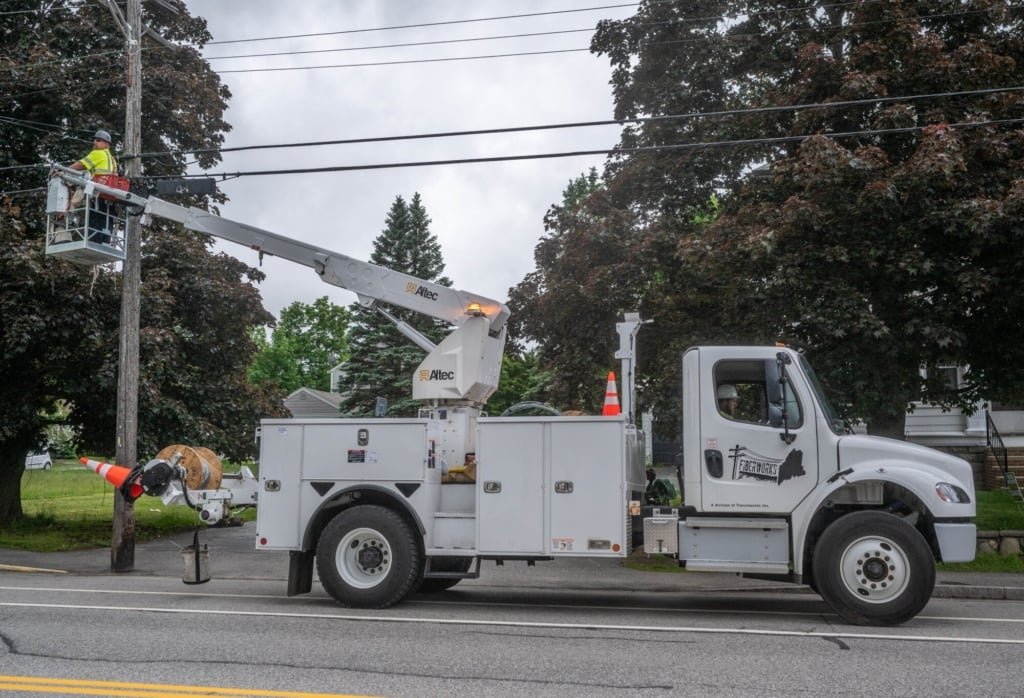- Alternative satellite internet company Astranis has its first spacecraft in orbit and says it’s working “perfectly”.
- “We have a new way to connect people in some of the most remote and underserved parts of the world,” Astranis CEO John Gedmark told CNBC.
- The company’s small satellite, built largely in-house and dubbed “Arcturus,” was launched on SpaceX’s Falcon Heavy rocket and is expected to begin servicing customers in Alaska by mid-June.
The Arcturus satellite is seen en route to geostationary orbit.
Astranis
Astranis, a San Francisco-based company with an alternative approach to providing Internet access from satellites, has its first spacecraft in orbit, and the company said Wednesday it was working “perfectly.”
“We have a new way to connect people in some of the most remote and underserved parts of the world,” Astranis CEO John Gedmark told CNBC.
The company’s small satellite, built largely in-house and dubbed “Arcturus,” was deployed May 1 after launch on SpaceX’s Falcon Heavy rocket and has recently arrived in its orbit. Astranis has already completed tests with the satellite, including connecting to user equipment for the first time in its service target of Alaska.
“This test validates everything we’ve worked on and are working on and it’s a huge, huge deal,” Gedmark said.
The Arcturus satellite is seen deploying its solar arrays in the background from the upper stage of SpaceX’s Falcon Heavy rocket.
SpaceX
Astranis is one of several next-generation broadband satellite systems under development as companies race to meet a growing global demand for data, including SpaceX’s Starlink, British-owned OneWeb, Amazon’s Project Kuiper, AST SpaceMobile and others.
But the company’s approach is the “third way” to deliver broadband services from space, Gedmark said. The company’s dishwasher-sized satellite combines the small form factor of satellites like SpaceX’s Starlink in low Earth orbit with the distant, geosynchronous orbit of mainstream players like Viasat.
Geosynchronous orbit, or GEO, is about 22,000 miles from the planet’s surface, a position that allows the spacecraft to hover above a fixed position, in line with Earth’s rotation.
Arcturus is a fraction of the size and cost of traditional GEO satellites.
“We can build these satellites very quickly compared to what has happened before,” Gedmark said.
Astranis highlighted 13 major milestones completed for Arcturus in a press release. Gedmark said the company is “incredibly proud” of the satellite’s performance thus far, dismissing both the “super-harsh radiation environment” and “extreme temperature range” that GEO spacecraft experience.
Gedmark said the Arcturus is operating about 10% to 15% above spec, which translates to about 8.5 gigabits per second of total capacity. For users, Astranis expects its satellites to deliver download speeds of around 25 megabits per second.
A “gateway” ground station at Eagle Mountain, Utah.
Astranis
Arcturus is positioned above Alaska, where Pacific Dataport, Astranis’ first telecommunications provider customer, will use it to triple the data speed available to users across the state. Gedmark said that about 40 percent of Alaskans lack access to reliable broadband Internet, which “is a shocking number” that shows how “hungry for satellite capacity” the state has been.
“We cover the entire state, including many of the more remote islands in the Aleutian chain,” Gedmark said, adding that Arcturus “will enable hundreds of thousands of people to get true broadband Internet.”
Most of Astranis’ target users are enterprises such as industrial companies, schools and hospitals rather than individual or residential customers.
The company expects Arcturus to begin service in mid-June after completing additional verification steps.
Astranis employees cheer as they watch the launch at the company’s headquarters in San Francisco, California.
Astranis
Astranis has raised more than $350 million since its founding in 2015, with a valuation of over $1 billion, with investors including BlackRock, Fidelity, Andreessen Horowitz, Baillie Gifford and Venrock. The company has more than 300 employees.
As for raising additional funding, Gedmark said the company remains in “a strong cash position” and is currently focused on making sure the service is up and running as soon as possible, for “people who really needed the internet yesterday.” “.
Astranis has a demand pipeline worth more than $1 billion, representing orders for 10 satellites, over the next two years.
It plans to launch four more satellites later this year on a SpaceX Falcon 9 rocket. One of those four has a deal with Latin American service provider Grupo Andesat, to deliver satellites that would bring better broadband access to as many as 3 million of people in Peru. Two more are for mobility-focused Anuvu, which provides services like in-flight WiFi for Southwest Airlines, and the latest satellite is for an unnamed commercial customer.
Gedmark previously estimated that the broadband demand market represents a $1 trillion global opportunity and noted that Astranis’ existing pipeline has contracts that include options for additional satellites.
“We’re ready to go out and roll out a lot of these satellites around the world and help connect people,” Gedmark said.
#Astranis #internet #satellite #working #perfectly #company #prepares #bring #coverage #Alaska




